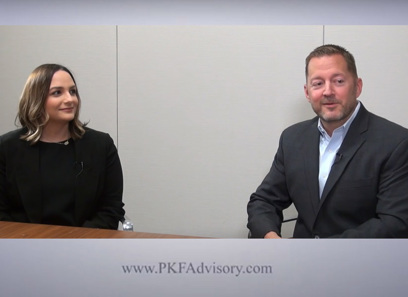The Essential Duty of Understanding Purchase Price Allocation in Mergers and Acquisitions Explained
The procedure of Purchase Price Allocation (PPA) plays a critical function in the landscape of mergings and acquisitions, influencing not only financial coverage however additionally tax obligation approaches and stakeholder perceptions. A nuanced understanding of PPA can considerably influence an obtaining business's monetary wellness, making its exact execution important for long-lasting success. Understanding Purchase Price Allocation in Mergers and Acquisitions. Nonetheless, the intricacies involved in valuing identifiable properties and responsibilities often result in challenges that companies must navigate carefully. As we discover the intricacies of PPA, it becomes apparent that the risks are high, elevating critical inquiries about finest practices and conformity standards.
Meaning of Purchase Price Allocation
Acquisition rate allotment (PPA) is a critical process in mergers and acquisitions that involves dispersing the complete purchase cost amongst the various recognizable properties and liabilities acquired in a deal. This allowance is essential for accurately showing the reasonable worth of the acquired entity's assets and liabilities on the annual report of the acquiring firm.
The PPA process typically begins with the recognition of all substantial and intangible assets, along with any type of obligations assumed during the purchase. Tangible possessions might include residential or commercial property, devices, and supply, while intangible possessions usually incorporate trademarks, licenses, and a good reputation. Each property and responsibility have to be gauged and valued to make certain that the appropriation reflects their reasonable market price at the procurement day.
The resulting appropriation impacts economic coverage and can influence future revenues via amortization and devaluation of abstract possessions. Furthermore, exact PPA is essential for compliance with bookkeeping criteria, such as International Financial Reporting Specifications (IFRS) and Normally Accepted Bookkeeping Principles (GAAP) A well-executed PPA procedure is basic to providing stakeholders with a clear financial photo of the deal's impact (Purchase Price Allocation in Mergers and Acquisitions).
Importance of Accurate Appraisal
Precise appraisal is vital in the acquisition cost allowance procedure, as it straight influences the monetary health and reporting of the getting company. An inaccurate evaluation can result in considerable misstatements in economic declarations, affecting stakeholder understandings and possibly causing regulatory examination. Correct valuation guarantees that the assets and responsibilities acquired during a merger or purchase are taped at reasonable value, which is necessary for precise financial coverage.
In addition, exact appraisal help in recognizing the a good reputation generated from the transaction, which is critical for future problems testing. Stakeholders, consisting of investors and analysts, count on the accuracy of these figures to evaluate the business's performance and make informed choices. Unreliable valuations might result in overpaying for an acquisition, leading to diminished returns and a lack of trust from investors.
Additionally, the assimilation procedure Understanding Purchase Price Allocation in Mergers and Acquisitions counts on exact evaluations to successfully designate resources and handle the newly combined entity. Inevitably, the value of precise appraisal in purchase rate appropriation can not be overemphasized; it lays the foundation for openness, functional effectiveness, and long-term critical success within the joined organization.
Tax Obligation Effects of PPA
In mergers and acquisitions, recognizing the tax implications of acquisition cost allotment (PPA) is necessary for both the obtaining company and the target entity. PPA establishes exactly how the total acquisition price is dispersed among various assets and obligations, which significantly affects the tax responsibilities of both events included.
The allowance directly impacts the tax obligation deductibility of intangible and substantial properties. Allocating a higher portion of the purchase cost to depreciable or amortizable properties can generate substantial tax obligation advantages, enabling the acquiring company to recover expenses over time through devaluation or amortization reductions. Alternatively, designating too much to a good reputation, which is not amortizable for tax purposes, might result in greater taxed income in the future.
Misallocation or misunderstanding of these possessions can result in unanticipated tax obligation liabilities, audits, or charges. Performing a comprehensive evaluation of tax obligation implications during the PPA procedure is essential to enhance economic outcomes and ensure conformity with applicable tax laws.
Conformity With Financial Standards

Entities associated with M&An activities have to diligently examine the fair worth of recognizable intangible assets, tangible properties, and obligations associated with the acquired entity. This analysis must be grounded in durable approaches, such as market, income, or price techniques, guaranteeing that the allocations mirror the economic reality of the purchase.

Finest Practices for PPA Execution
Successfully navigating the purchase rate appropriation (PPA) process needs the execution of ideal methods that streamline evaluation and enhance precision. One crucial technique is engaging knowledgeable valuation specialists that are well-versed in both monetary and operational aspects of the target business. Their expertise is essential for determining reasonable values for recognizable assets and obligations.
An additional best method includes thorough due persistance. Gathering detailed information on the target's assets, obligations, and functional metrics permits a much more specific allowance of acquisition cost. Furthermore, establishing a durable framework for evaluating abstract possessions, such as brand name value and client connections, is essential to make sure that all pertinent variables are taken into consideration.
Incorporating efficient communication amongst stakeholders, consisting of finance, legal, and functional groups, can better boost the PPA process. Regular updates and collective discussions promote a common understanding of assessment techniques and assumptions.
Last but not least, keeping paperwork of the reasoning behind appraisals and allotments is critical. This not just aids in conformity with bookkeeping criteria however likewise acts as a recommendation for future audits or disagreements. By sticking to these ideal methods, companies can achieve a more exact and effective PPA procedure.

Final Thought
In verdict, understanding purchase price allocation is vital in mergers and purchases, as it directly influences economic reporting, tax commitments, and integration strategies. Applying best techniques in PPA not only enhances the economic health and wellness of the getting business but likewise contributes to successful purchase results.